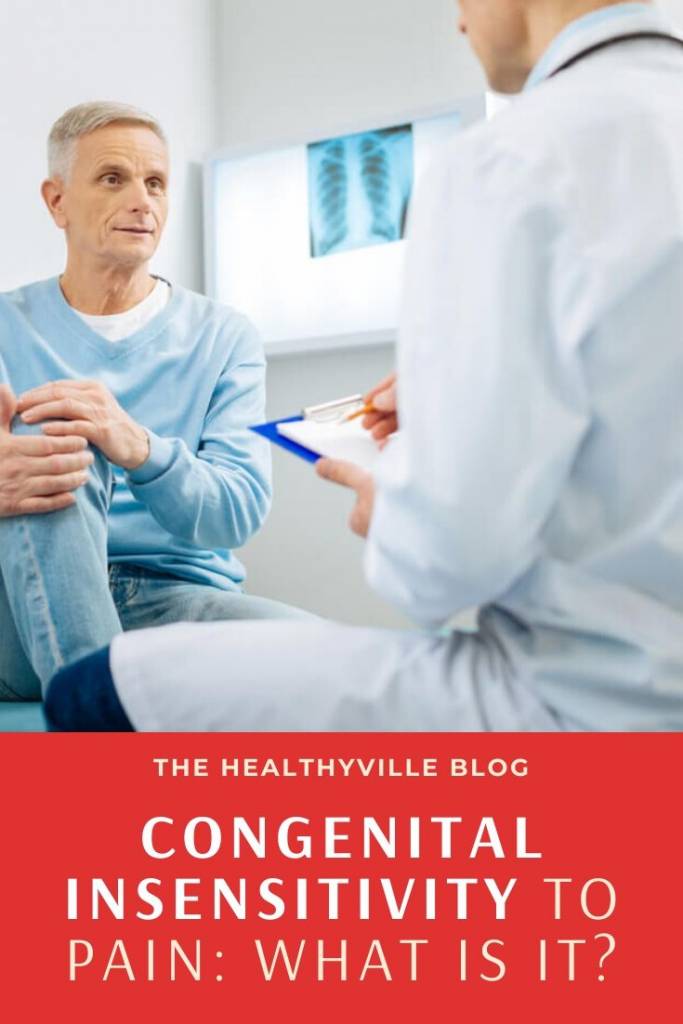Congenital insensitivity to pain carries the risk of suffering different injuries and not being aware of it. See what this strange condition is about.
Pain is an unpleasant sensory experience, an alarm signal from our body to protect against something that is causing an injury. It is one of the fundamental survival mechanisms of our species. This is why the disease can be so dangerous.
Congenital pain insensitivity is a rare inherited disease. It is, in fact, a set of diseases called hereditary sensory-autonomic neuropathies (NHSA). People who suffer from it are unable to feel physical pain.
Until relatively recently this pathology was unknown. The first time it was described was in 1932, which was a great advance because, despite having a low incidence, it is a serious disease.
The fact of not feeling pain means losing a great source of stimuli about what happens in our body. This means that people suffering from congenital insensitivity to pain are exposed to a constant risk. In this article we explain everything about the subject.
What is congenital insensitivity to pain?
It is, in fact, a group of different diseases (hereditary sensory autonomic neuropathies). Each of them is caused by the alteration of a particular gene whose function is related to the sensation of pain. The most relevant are:
NHSA type I. In this, in addition to pain insensitivity, there is also a loss of thermal sensation. People who suffer from it usually have impaired hearing and touch. Appear around 20 years.
Of childhood or Type II. In this type the alteration of the touch predominates, although the insensitivity can be partial or complete.
Type III insensitivity. It usually occurs in newborns. Babies have difficulty breastfeeding, low muscle tone and are usually irritable.
Type IV It is the most frequent. This type is associated with an inability to sweat – anhidrosis. Unlike the rest, touch is preserved and temperature changes are perceived. The biggest problem is that they can’t regulate their body temperature so many die from fever soon.
All types carry the same risk. The insensitivity to pain prevents knowing the severity of any injury that occurs in the body. It is even frequent that they present wounds or other pathologies and that they do not even know it.
For example, it is quite common for these people to suffer fractures and not notice. In the same way, the skin is usually quite characteristic, since they always have wounds, ulcers or scars.
How to diagnose it?
Being a not very frequent disease the diagnosis is complex. The most important thing is to carry out a good medical history and a correct physical examination. Especially in the case of babies, since in them it is necessary to look at certain signs.
For example, many babies have tongue or lip wounds. Pain insensitivity usually manifests with wounds, bruises or broken bones to which the patient shows no reaction.
In addition, certain complementary tests can help confirm the diagnosis. First, the electroneurogram is a test that allows us to assess whether there is involvement of the nerves. Doctors perform skin biopsies, too.
In this last test, people with insensitivity usually have altered nerve endings. In fact, those who suffer from a type IV NHSA will also have an alteration of the sweat glands.
However, one of the most important aspects is the genetic study. It is usually the confirmation test. In addition, because it is an inheritable pathology, it is necessary to ask about the patient’s family history.
Read more: Medicines and the Best Exercise for Osteoporosis as Protection Measures against Fractures
In conclusion
Congenital insensitivity to pain is a group of different pathologies. All of them have altered some gene related to the sensation of pain. Each type is accompanied by other symptoms such as:
- Anhidrosis
- Pressure insensitivity
- Temperature insensitivity
This insensitivity poses a great risk to life, since pain allows us to locate the lesions and know when something is wrong in our body. Therefore, it is important to diagnose it as soon as possible and raise awareness among these patients
Don’t forget to SHARE the information you learned today with your friends and family on your social networks!

